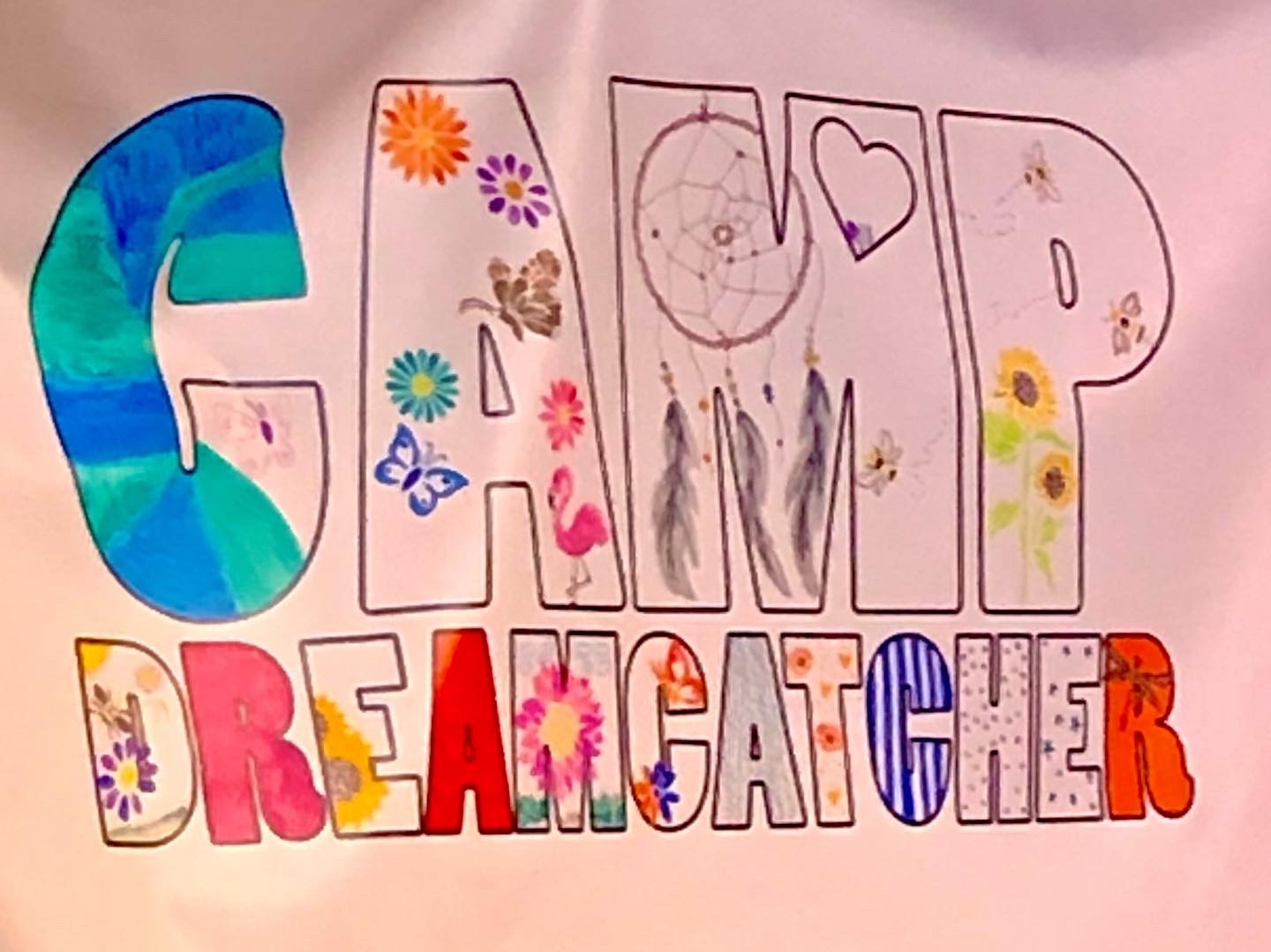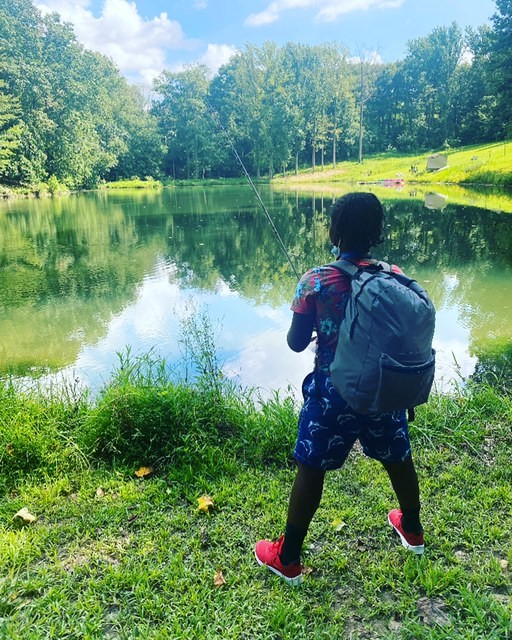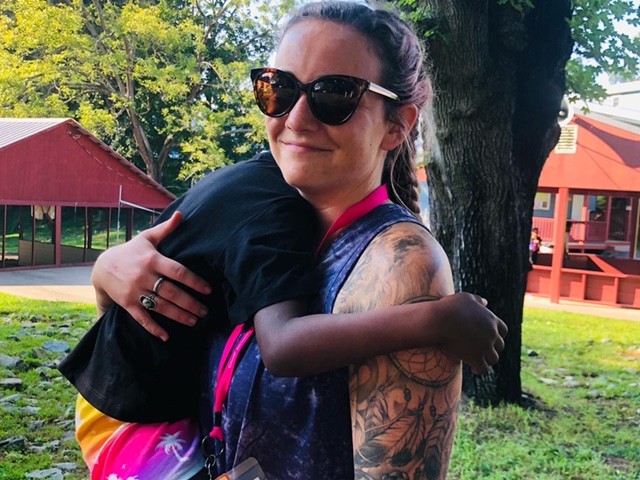We recently connected with Patty Hillkirk and have shared our conversation below.
Hi Patty, thanks for joining us today. It’s always helpful to hear about times when someone’s had to take a risk – how did they think through the decision, why did they take the risk, and what ended up happening. We’d love to hear about a risk you’ve taken.
When I look at this question about “taking a risk” I reframe it as a question about “following a dream.” In 1995, I had the dream of creating a therapeutic community for children coping with HIV/AIDS. My journey began with my volunteer work with adults living with HIV/AIDS in 1987. Around that time, I learned that my best friend was diagnosed with HIV. I wanted to learn more about the disease, and I became an HIV/AIDS educator with the Red Cross. This led me to serve as a volunteer therapist for seven years with an organization serving adults living, and dying, with HIV/AIDS.
Also, during this time, I was completing a three-year training certification course with the Pennsylvania Gestalt Center. In 1991, I started a private psychotherapy practice working mostly with children, teens and adults who were trauma survivors. One Sunday night in 1995, I was watching a program on “60 Minutes” about a camp for HIV/AIDS impacted children in New York, and their stories touched my heart. I knew the devasting impact of HIV/AIDS on the adults and families I had been working with for the past decade, and I wanted to create a comprehensive therapeutic program to serve children impacted by the disease. My good friend and gestalt colleague, Charlotte, watched the same program that evening, and called me immediately and said, “you need to start a camp for kids coping with HIV/AIDS.” Several other gestalt colleagues strongly encouraged me to do so and their never wavering belief in my ability to take this risk really moved me towards making my dream a reality.
I didn’t know anything about creating or running a camp program. I had been to camp as a child, and I had experienced the positive impact that camp programming can have on children and teens. I wanted to offer that, and to also offer a safe and therapeutic space for kids to receive unconditional love and support from a therapeutic community. I was determined to offer a program that was free for the children. I decided to volunteer during the summer of 1995 at a one-week camp program for kids coping with HIV/AIDS in New Jersey. Although my experience as a camp counselor was great, the camp itself did not offer any therapeutic programming. I returned home determined to follow my dream, and in January of 1996, we held the first Steering Committee for Camp Dreamcatcher, and in August of 1996, we held our first camp session for 53 children.
I had a full private practice during that time, and I was living on a farm in West Chester, PA. I felt that a one-week camp session was doable for me, and that I could continue with my private psychotherapy practice, and also direct the camp session. Little did I know that the campers, who were 5-13 years of age, would come to me and urge me to expand the age of the program so they could keep coming back. Now, almost 27 years later, we served “Kids” between the ages of 5-35, and many of our camp counselors used to previously be campers. In 1999, we started offering year-round programs for HIV/AIDS impacted youth, and we now offer the one-week therapeutic and educational camp session, weekend teen and counselor retreats, an emergency gift card program for families, a holiday adopt-a-family program, a college scholarship program, and HIV/AIDS education, training and community outreach.
Our program has served nearly 6,000 youth over the past 26 1/2 years, and our wonderful group of counselors, medical personnel, professionals, and community members have provided over 300,000 hours of volunteer service!



As always, we appreciate you sharing your insights and we’ve got a few more questions for you, but before we get to all of that can you take a minute to introduce yourself and give our readers some of your back background and context?
My work in the HIV/AIDS community was first inspired by my desire to help my friend, and to learn more about the disease. I come from a family where volunteer work was part of my early life experience, and it was natural for me to find a way to get involved in helping through volunteer service. From there, my personal interactions and relationships with children, teens and adults living with the disease continued to inspire me to create a therapeutic community for HIV/AIDS impacted youth. One of the things that I did early on was to reach out to other nonprofit organizations, HIV/AIDS case managers, hospitals and others working within the community to identify children in need of our programs. I visited the case managers in Philadelphia and the surrounding counties to invite them to send their kids to camp, and to volunteer during the camp session.
The next challenge was to raise the funds for the camp session. In 1996, our annual budget was about $45,000 and we raised the funds through some foundations, and by going door to door to businesses to ask for donations. Our current budget is over $400,000 and we still raise funds through foundations, fundraisers, individual and corporate donations. We actively engage our board members, staff and volunteers in raising funds for the organization. In addition to financial support, over $70,000 in in-kind supplies, and $65,000 in professional services are donated each year to Camp Dreamcatcher.
The mission of Camp Dreamcatcher is to provide safe, therapeutic and educational services to HIV/AIDS impacted youth and their families. Our vision is to foster an atmosphere of tolerance, compassion, respect and understanding through volunteer opportunities, services and expanded community involvement. We serve our children and families through the following activities:
● Therapeutic and Educational Summer Camp: For a week in August, we host about 120 children at Camp Saginaw in Oxford for a memorable time during which children can shed the stigma of HIV/AIDS, enjoy a week of fun activities, and also participate in education and activities to improve their health and well-being in the long term.
● COVID-19 Emergency Fund for Families: This program provides grocery gift cards for families.
● Counselor HIV/AIDS & Diversity Training is held prior to the camp session in August.
● Adopt-a-Family Program: This annual program is held in November and December each year. We will distribute gifts to at least 120 children in 2022.
● The Phoenyx College Scholarship: This College Scholarship Program offers two, $1,000 scholarships to college bound campers.
● Progressive Leadership Program (PLP): These programs are offered to youth when they are 15 years of age, or older. The programs include weekend teen leadership retreats, camper to counselor retreats, wilderness-based therapy programming, Leaders in Training and Emerging Leaders Programs.
Camp Week Program Goals:
• To improve the physical and emotional health of the children. In 2022, we provided 150 group therapeutic sessions (group psychotherapy, yoga, massage, mindfulness, wilderness-based therapy, art therapy) and over 100 individual therapy and/or restorative justice sessions during the camp week. Twenty of the children attending the session were New Campers this year. 160 counselors, medical personnel, professionals and community members volunteered during the camp session, and provided 10,000 hours of service!
• To offer educational sessions that explore issues, problems and concerns common amongst HIV/AIDS infected and/or affected youth. 50 age-appropriate educational sessions were offered during the 2022 camp session and included dance
classes, karate and self-defense, cooking, drumming, guest speakers, teambuilding and leadership programming. The 15-17-year-olds participated in Career & College Readiness and Financial Literacy Programs during the camp session. The Leaders in Training (16- & 17-year-olds) participate in a two-year track which includes life skills, career & college readiness programs.
● To give the children and adolescents attending our programs the chance to feel free from the secret of HIV/AIDS and have fun. During the camp week, we provided 150 recreational programs. These included arts & crafts, archery, karate, swimming, fishing, hiking, go-kart racing, movies on a giant blow up screen, miniature golf, laser tag, dodge ball, basketball, horseback riding, a camp wide carnival, dancing, talent and our annual Dance, Talent Show and John Flynn Concert.
● Emerging Leaders Program. This new program increases the pathways to leadership for young adults in the organization. The group is comprised of teen campers who grew up at camp, have transitioned into the role of counselors, and are planning their futures.
● New Restorative Justice/Conflict Mediation Program: All of our counselors, staff and health center volunteers completed a Restorative Justice/Conflict Mediation Training prior to the camp session. The restorative practices used at camp included the use of proactive Cabin Circles to promote connectedness in the cabin, and the use of Restorative Circles to address conflicts, repair harm, and restore justice within the community. These practices promote inclusivity by inviting all of the camp community involved in the conflict to have a seat within the circle, express their feelings, and to be actively involved in the decision-making process of how to repair the harm and restore justice within the community.



Can you tell us about a time you’ve had to pivot?
We made the decision to shift our programs to a virtual format in May of 2020. This included offering our annual Catching Dreams for Kids Event on a virtual format, our weekend teen leadership retreat, two weeks of therapeutic/educational/recreational camp, program planning meetings, counselor trainings, and our holiday adopt-a-family program.
This was a difficult decision for our Board of Directors, staff and volunteers. We know the positive impact our in-person programming has on the youth served by our programs. It took us awhile to wrap out heads around how we could provide our programs on ZOOM platforms. We obtained input from the stakeholders of our organization, including the counselors, health center personnel, therapists, campers and families. We wanted to understand their needs, feelings and challenges. We also followed the guidance of the CDC and the American Camping Association in Once we came to the decision to pivot to virtual programming our Board of Directors created a COVIDF-19 Plan to continue our services throughout the pandemic.
One of the first challenges was to identify whether the families served by our programs had access to devices for virtual programming. We identified 32 children in need of devices, and thanks to a local foundation, we were able to purchase 32 laptop computers and deliver them to the children prior to the camp session, along with the other supplies for their camp week programming. These included backpacks, snacks, blankets, stuffed animals, toiletries, art/craft supplies, BOMBAS socks, clothing and other camp week supplies. We served 80 children, ages 5-17, during the two weeks of virtual camp programming in 2020. This was in large part due to the 125 volunteers who facilitated therapeutic, recreational and educational programs throughout those two weeks. We were even able to offer our evening programming, which included our opening ceremony, concerts, dance, talent show, and our special wish log ceremony.
In August of 2021, we shifted back to offering an in-person camp session for 85 children. We created COVID-19 guidelines for the camp week that required all of the volunteers to be vaccinated, and for the children to obtain PCR and rapid COVID-19 testing prior to camp. We moved our meals and most of our programming outdoors during the camp session. Our 2022 camp session was also offered in-person and served 87 children. Our goal is to increase the number of children and counselors each year as we return to in-person programming.


What’s been the most effective strategy for growing your clientele?
The most effective strategy has been actively engaging the youth, volunteers and families served by our programs in our program planning process. As we provide the only therapeutic camp program on the east coast, the need for our programs unfortunately increases each year. We strive to decrease the barriers to mental and physical health equity by offering the programs at no cost to the children, providing transportation to our programs, and assisting with camper & volunteer applications. We also invite the stakeholders of the organization to join the Board of Directors in evaluating the programs each year, and to be part of the strategic planning of the organization.
98% of the youth served by our programs are from low-income households, and only 13% have access to free or affordable therapeutic support in their own communities. Children attending our programs are HIV/AIDS infected themselves, have an HIV/AIDS infected family member, or have lost a family member to an AIDS-related complication. The children served by our programs face the isolation and stigma associated with HIV/AIDS. For most of the children, our programs offer the only place they feel comfortable talking about the disease. In addition to HIV/AIDS, 70% of the youth have experienced some form of trauma, 50% have lost one or both parents, and 30% have been diagnosed with a mental health condition.
The other effective strategy is to listen to the needs of the volunteers working with the children, and to offer trainings and tools to assist them in their service with Camp Dreamcatcher. 70% of the children and volunteers have been attending our programs for over ten years and have developed deep bonds, which builds resiliency in the youth served by our programs. Our therapeutic team consists of eight therapists with different skills and backgrounds. This year, we provided a restorative justice training to the Camp Dreamcatcher staff and volunteers to assist with conflict mediation in the cabins. These tools were extremely helpful in engaging the children to be part of the restorative process throughout the camp session. We also encourage counselors to attend Mental Health First Aid and Suicide Prevention Trainings throughout the year.
We provide Trauma Informed Programming which ensures the following:
• A physically and emotionally safe environment.
• Predictable schedule & Camp Traditions that increase security and a feeling of BELONGING at camp.
• Clear & healthy emotional and physical boundaries.
• Caring adults & the opportunity to form positive relationships
• Opportunities that develop a sense of agency and control over their lives.
• Provides resources and tools that help campers identify and process their emotions.
• Opportunities to be vulnerable and to receive compassionate and caring support.
• Sensitivity to trauma triggers at camp.
• Therapists who understand the impact of trauma and how to support children at camp.
• Opportunities to shift from a place of isolation and stigma to empowerment and resiliency.
We survey campers and volunteers on their satisfaction with the camp experience, as one of our goals is for the youth and volunteers to experience a sense of BELONGING at camp. In 2021 a Diversity, Equity & Inclusion Assessment Survey was completed by Camp Dreamcatcher staff, board members and volunteers.
100% of those surveyed “AGREED OR STRONGLY AGREED” to the following statements:
• “I would recommend Camp Dreamcatcher to friends and colleagues due to the welcoming and inclusion culture.”
• “I am satisfied that I have opportunities to apply my talent and expertise at Camp Dreamcatcher.”
Quotes from the survey:
“Very diverse group of volunteers, high levels of inclusion for a new first-time volunteer”
“The camp staff were from all walks of life, of various ages, locations, backgrounds, jobs etc. which made me feel accepted immediately as it came across as an all-inclusive environment.”
100% of the 2022 Camp Counselors reported that their camp week experience was “excellent” and that the Camp Dreamcatcher Counselor Training prepared them for the camp session. One counselor stated that “The restorative circles seemed to benefit the campers because they gave everyone a chance to speak and to be heard.”
Quotes from camper evaluations – If you could share one part of Camp Dreamcatcher with the world, what would it be?
“That it is a safe place.”
“The love we have here.”
“That you can love people with HIV/AIDS.”
“That it is a wonderful, lovely and outstanding camp.”
98% of the youth served are BIPOC (Black Indigenous People of Color). We strive each year to increase the diversity, equity and inclusion of our organization. We recently learned that we are the first camp program to be awarded the S’more Melanin Seal of Approval for our DEI efforts. The Seal of Approval is given to those camps that are taking concerted steps towards creating more inclusive and equitable spaces. Camp Dreamcatcher met the rigorous Standards by auditing a variety of practices and policies for evidence of equity.
Contact Info:
- Website: https://campdreamcatcher.org/
- Instagram: https://www.instagram.com/campdreamcatcher/
- Facebook: https://www.facebook.com/therapeuticcamp/
- Linkedin: https://www.linkedin.com/company/camp-dreamcatcher
- Twitter: https://twitter.com/CampDreamcatchr
Image Credits
Fred Weiner Melissa Hewson Patty Hillkirk


